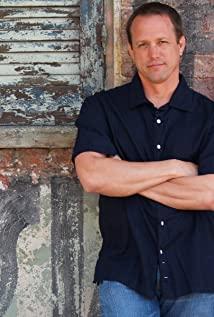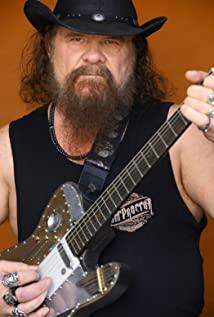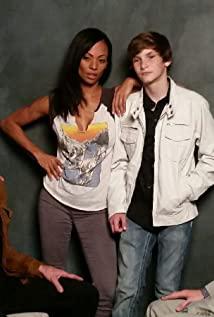Summary: "The Baytown Outlaws" (The Baytown Outlaws) is an American film with a distinctive style. On the whole, it represents the (stereotype) impression of the American South and appeals to the themes of violence and salvation. The rhythm is bright, compact and not procrastinating, the narrative is smooth, and the action is exaggerated and not exaggerated. Generally speaking, it is an action film with outstanding characteristics.
Character setting analysis:
Three brothers: Under the rough appearance is a simple and direct character. In the specific characterization of the three, the primary and secondary are clearly complementary-the boss is rational; the second is kind; the younger is impatient. The three brothers have obvious shortcomings of the lower whites in the South and the temperament characteristics that they have shaped. Violent tendencies, monolithic lines and courage are subtly mixed together, but they are by no means obtrusive.
The background story of the three brothers: They come from a single-parent family, and their father is cruel-a series of character defects (character characteristics in the film) caused by the setbacks in the growth of the three brothers. Their childhood is full of tragedy, which echoes the story of rescuing mentally handicapped children — and symbolizing their own salvation — to rescue the child in the wheelchair from the bad guys.
Secondary characters:
Intellectually disabled children in wheelchairs: the main drama element. The main clue character of the story. At the same time, it is also a symbol of the salvation of the three brothers.
Sheriff: Protector of the three brothers. Realistic, humane (although usually black-faced) and sense of responsibility.
Agent ATF: The dramatic element that promotes police action is also the lead of the film to establish correct values at the end.
Ex-wife of the drug dealer: the drama element, guide the three brothers.
Drug dealer: The main villain of the story is also the difficulty that the three brothers have to overcome.
Characters in the plot:
Nurse: The plot needs-to treat the second child's injury-at the same time to guide the final redemption and create values.
Killer: a symbolic symbol of violence.
Mixing in the opening: assisting to establish the overall atmosphere of the film at the opening.
One note: the sheriff rescued the three brothers when they were young and has been helping them (rather than raising them directly). Although the trio continued to cause trouble after they grew up, their violent tendencies mainly came from their father's influence. Of course, it is not ethical for the sheriff to use them to curb violence, but it is still realistic in the context of the film's environment. Note that the sheriff is not their guardian.
Style characteristics: The yellow filter is mainly used in the whole filming to create a rusty, run-down and "nasty" atmosphere. However, in the late coloring, the flaws of green plants that are too bright are ignored.
Market forecast: Action type. Strong colors of violence; simple, direct, and crude, coupled with the theme of redemption and ethical values, the market expects to be optimistic. The distinctive (slightly stereotyped) southern color is both a selling point and may have a negative effect on post-release evaluations-especially in the politically correct environment of the United States, critics will be classified as violent and stimulating vulgar commercial films. The target audience is non-elite groups. It is expected that the commercial theater line will be in the middle and the lower part of the film, and the word-of-mouth effect will not be obvious (or spread within a specific group). And the positioning deviates from the mainstream.
Cost\benefit estimation (IMDb and the numbers data): The estimated budget is 4 million. Box office revenue (the numbers) was not released in theaters, and the total number of DVD releases (including Blu-ray): $3,133,288. The cost has not been recovered. [Really data about face slaps~~~]
Conclusion: There are no stars, the story is single-line, and the style is unwelcome (the southern stereotype definitely lowers the score). Direct DVD distribution in North America also shows that it is impossible to achieve commercial success. Although in our opinion, this action movie looks very smooth and sharp, not muddy and has a certain stylized mark. But in the fiercely competitive North American market, the film still ended in failure (revenues are lower than costs).
Script analysis:
Opening: The three brothers shoot and kill local gangsters. Rough, violent, and consistent shabby, rusty colors (yellow filter), instantly create the film's tone-this should be a more prominent advantage.
Character explanation: cartoonization; the rapid introduction of dramatic conflict (the appearance of ATF agents) without stopping, that is, the appearance of the characters and the background explanation are launched in the quickest way.
Main storyline: Fight with three people in the process of rescuing mentally handicapped children. Sexy girls; black violent gangs and Indian killers, each with its own characteristics. Interspersed with the personalities of the three brothers and their entanglement with the police (the second narrative line). In the scene, it has the characteristics of a road movie. The combination of roads (starting and ending points) and special locations includes the description on the police side. Xu Ji is orderly and relaxed, which adds a lot to the compactness of the narrative. In addition, the three brothers are not portrayed as superman, but cleverly set the injury of the strongest second of the brothers-this is a preparation for the smooth suppression of violence and an ethical ending.
Outcome: Three brothers were arrested for violence; accept punishment. The sheriff was punished for condoning violence. The detective was punished for his due diligence. Drug dealers are punished for their crimes (even MPs who play SM are also punished). Only the mentally handicapped children walked out of the shadows and walked towards the sun. It shows that the film is ultimately to create a moral value acceptable to everyone—that is, the general ethics of mainstream audiences—any film must complete its own moral construction at the end; at the same time, it must be positive. This is not only to reach agreement with the audience and to resonate, but more importantly, the film needs to establish correct values in mass communication.
View more about The Baytown Outlaws reviews











